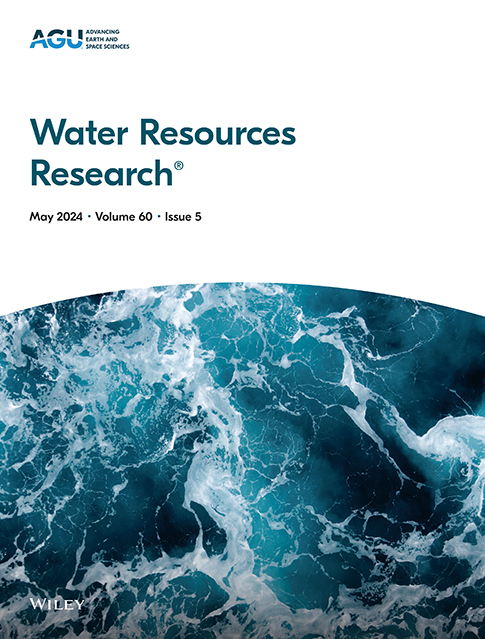Mechanisms of Solute Transport in Ice-Supersaturated Debris: 2. Rock Glacier Hydrology in Alpine Glacial-Periglacial Systems
IF 4.6
1区 地球科学
Q2 ENVIRONMENTAL SCIENCES
引用次数: 0
Abstract
Active rock glaciers represent permafrost-affected aquifers that store freshwater in alpine headwater catchments. Groundwater flow in these aquifers is altered by degrading permafrost and the development of preferential flow paths in the subsurface. Where these pathways connect to form channel networks, they significantly change solute and pollutant transport. This study analyzes the hydraulic properties of such channel networks at two active rock glaciers in the Austrian Alps through tracer tests and inverse transport modeling. At both rock glaciers, tracer clouds traveling down the channel network show fast advection and limited dispersion. Parts of the tracer are retarded in stagnant water zones along the flow paths, such as turbulent eddies and vortices, recirculation in cascades and pools, and dead-end passages between the blocks of the ice-debris mixture forming the frozen rock glacier cores. The patterns of water infiltration control the channel network structure: localized recharge strongly concentrates flow along a major channel, diffuse recharge results in a distributed network of smaller channels with diverging and converging flow paths. The hydraulic properties of these channel networks are crucial for assessing the vulnerability of permafrost-affected aquifers. They permit the rapid transfer and partial retardation of solutes, making them more susceptible to contamination—a growing concern as infrastructure development advances in high alpine environments.求助全文
约1分钟内获得全文
求助全文
来源期刊

Water Resources Research
环境科学-湖沼学
CiteScore
8.80
自引率
13.00%
发文量
599
审稿时长
3.5 months
期刊介绍:
Water Resources Research (WRR) is an interdisciplinary journal that focuses on hydrology and water resources. It publishes original research in the natural and social sciences of water. It emphasizes the role of water in the Earth system, including physical, chemical, biological, and ecological processes in water resources research and management, including social, policy, and public health implications. It encompasses observational, experimental, theoretical, analytical, numerical, and data-driven approaches that advance the science of water and its management. Submissions are evaluated for their novelty, accuracy, significance, and broader implications of the findings.
 求助内容:
求助内容: 应助结果提醒方式:
应助结果提醒方式:


